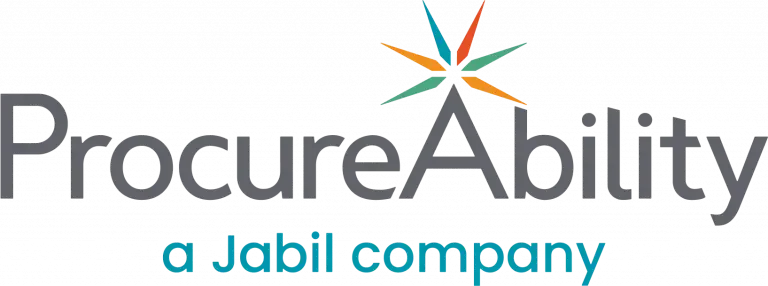Procurement Glossary
Acquisition Cost:
The total expenditure a company incurs to acquire assets, attract new clients, or take over another company is known as the cost of acquisition. Also, it is a key business metric for companies and investors. Specifically, this cost includes the final price paid for property or equipment, along with discounts, closing costs, and other necessary expenses.
Artificial Intelligence:
Artificial Intelligence (AI) in procurement refers to the use of advanced algorithms and machine learning technologies to enhance and automate various aspects of the procurement process. AI can significantly improve efficiency, decision-making, and strategic planning. It does so by analyzing large volumes of data and providing actionable insights.
Category Management:
A strategic approach to procurement and supply chain management involves organizing and managing procurement activities by grouping similar products or services into categories. Category Management aims to optimize purchasing decisions. It also aims to improve supplier relationships and achieve better overall value for the organization.
Chief Procurement Officer:
A Chief Procurement Officer (CPO) is a senior executive responsible for overseeing and managing an organization’s procurement and supply chain activities. The CPO plays a critical role in ensuring that procurement activities contribute to the organization’s success, both strategically and operationally.
Contract Management:
Collaborating closely with suppliers and internal customers to minimize the total cost of ownership and maximize supply chain efficiencies throughout the duration of the contract.
Cost Management:
The planning, monitoring, and controlling of costs to ensure that an organization’s expenditures are kept within budget and aligned with financial objectives.
Covered Spend:
The portion of an organization’s total procurement spend that is managed through formal procurement processes and systems. It includes contracts and agreements, procurement policies, and strategic sourcing.
Delivery Terms:
Also known as Incoterms (International Commercial Terms), define the responsibilities and obligations of buyers and sellers in a transaction related to the delivery of goods. These terms specify who is responsible for the costs, risks, and logistics. They specify those associated with transporting goods from the seller to the buyer.
Demand Planning:
The process of analyzing historical sales data and current trends to predict the future demand for a product or service and developing a strategy to meet that demand.
Digital Procurement:
Digital procurement uses technologies like process automation, artificial intelligence (AI), and data analysis within software or portal systems to enhance the procurement process. As a result, Digital procurement reduces manual labor, cuts costs, increases organizational transparency, and improves customer experiences.
Direct Procurement:
It’s the process of acquiring raw materials, resources, goods, and services that are essential for a business’s core operations.
Enterprise Resource Planning (ERP) System:
ERP systems are integrated software solutions that help organizations manage and streamline core business processes across departments. By consolidating data and automating tasks, they support functions such as finance, human resources, supply chain management, manufacturing, and customer relationship management.
E-Procurement:
The electronic procurement process, often referred to as eProcurement or supplier exchange, involves requisitioning, ordering, and purchasing goods and services online. Typically, this process occurs in business-to-business (B2B) transactions.
ESG:
A set of criteria used to evaluate a company’s performance and practices in Environmental, Social, and Governance. This criterion is used by investors, stakeholders, and other entities to gauge a company’s long-term sustainability and ethical impact.
Indirect Procurement:
Purchasing goods, services, and resources that are not directly involved in the production of a company’s core products or services but are necessary for its day-to-day operations.
Logistics Management:
Logistics oversees the acquisition, storage, and transportation of inventory from origin to destination. It manages resources and ensures goods are delivered to the right location, at the right time, and to the correct customer.
Managed Services:
Managed Services is the practice of outsourcing certain business functions or processes to a third-party provider. This model allows organizations to focus on core activities while relying on external experts to handle specific tasks. It can cover functions such as IT infrastructure, cybersecurity, software management, human resources, and more.
Market Research:
Market research involves collecting, analyzing, and interpreting information about a market, including the target audience, competitors, and industry environment. Its purpose is to provide actionable insights that help businesses make informed decisions and develop effective strategies.
Mergers & Acquisitions (M&A):
Various methods of combining companies to enhance their capital structure. These methods can include purchases, tender offers, management acquisitions, consolidations, or mergers.
OEM Procurement:
A process of sourcing and purchasing components, parts, or products directly from Original Equipment Manufacturers (OEMs). In OEM procurement, businesses acquire these components to integrate them into their own products or systems.
Purchasing:
A critical function in procurement and supply chain management, focusing on obtaining the required resources efficiently, cost-effectively, and in compliance with organizational policies.
Procurement:
The process of acquiring goods, services, or works from external sources. It involves various activities such as identifying needs, supplier selection, purchasing, and contract management.
Procurement BPO (Business Process Outsourcing):
Procurement BPO is the practice of delegating part or all of an organization’s procurement responsibilities to an external provider. This outside partner takes on activities such as sourcing suppliers, negotiating contracts, managing vendor relationships, and handling invoice workflows. The goal is to cut operational costs, tap into specialized expertise, and free internal teams to concentrate on other business priorities.
Procure to Pay (P2P):
Procure-to-Pay (P2P) is a structured process covering the receipt of goods or services and the subsequent payment. As a key part of the procurement cycle, it links purchasing with accounts payable (AP) and directly impacts financial forecasts and quarterly statements. By reducing manual tasks, simplifying three-way matching, and improving accuracy, P2P helps control costs. It also boosts overall efficiency.
Request for Proposal (RFP):
A formal document that solicits proposals from potential suppliers for goods or services. It typically includes specifications and criteria for evaluation and includes detailed proposals that outline how the vendor will meet the organization’s needs.
Request for Quotation (RFQ):
A request for quote (RFQ) is a document organizations use to get price quotes from suppliers for specific goods or services. It’s typically used when requirements are clear, allowing comparison of prices and selection of the best supplier.
RFx:
Software solutions designed to manage the Request for Proposal (RFP) process, including drafting requests and managing supplier responses. These tools streamline procurement and bidding procedures by utilizing features like template libraries, automated responses, and even artificial intelligence.
Risk Management:
Identifying, assessing, and mitigating potential risks associated with the procurement process. This includes developing strategies to manage risks, such as diversifying suppliers, securing favorable contracts, enforcing quality controls, and creating contingency plans.
Sole Source:
A procurement situation where a specific supplier is the only available or qualified provider for a particular product or service. The supplier typically has unique expertise or highly specialized service, technology, or proprietary products that are not available from any other source.
Source to Pay (S2P):
Source-to-Pay (S2P) is an integrated procurement process that covers the entire lifecycle of acquiring goods and services, from sourcing suppliers to making the final payment.
Sourcing:
The process of identifying, evaluating, and contracting suppliers of goods or services. Sourcing aims to find the most cost-effective and efficient suppliers.
Sourcing Manager:
A person who drives purchasing decisions for an organization based on scenario analysis, market trends, and cost and negotiates contracts with key suppliers, ensuring transparency of spending.
Strategic Sourcing:
Strategic sourcing is a supply chain approach where businesses systematically gather and use vendor information to maximize overall value. Unlike traditional purchasing, which focuses on the lowest price for individual items, it considers the total cost and value of the entire process. It also involves ongoing market analysis and continuous assessment of vendor performance and pricing. The benefits include short-term cost savings, a more sustainable supply chain, and stronger long-term supplier relationships.
Supplier Relationship Management (SRM):
The practice of managing relationships and performance with suppliers to ensure they meet the company’s requirements in terms of quality, delivery, and cost.
Supplier Diversity:
Supplier diversity is a business strategy that includes a wide range of suppliers in an organization’s procurement process. Its goal is to promote participation by businesses owned by underrepresented or disadvantaged groups, such as minority-owned, women-owned, veteran-owned, LGBTQ+-owned, and disabled-owned enterprises.
Supply Chain:
The supply chain is an interconnected network of organizations, people, activities, information, and resources involved in producing and delivering a product or service—from raw materials to the final consumer. It spans the entire product lifecycle. It requires coordination with suppliers, manufacturers, distributors, and customers to improve business performance.
Sustainable Procurement:
Procurement seeks to align practices with broader sustainability goals, support corporate social responsibility, and contribute to global environmental and social improvements. It focuses on achieving procurement objectives while minimizing negative impacts on the environment and society. It also promotes long-term economic benefits.
Tail Spend:
Also known as uncovered spend, tail spend is the portion of a company’s total procurement spend that is composed of numerous small, infrequent purchases. These purchases are often made outside of the main procurement processes and are typically lower in value compared to strategic or high-value purchases.
Transformation Strategy:
A transformation strategy is a comprehensive plan to improve an organization’s operations, processes, and business model, boosting performance, efficiency, and competitiveness. It typically involves rethinking and redesigning aspects of the organization to adapt to market changes, technological advances, or internal challenges.
Vendor Managed Inventory (VMI):
A supply chain agreement where the supplier manages the inventory levels of products at the buyer’s location.

